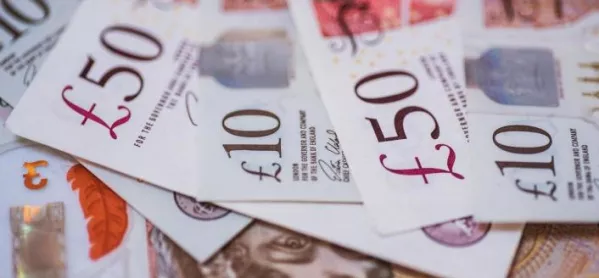EYFS: Do we still need to teach about money?

The ever-popular “penny shop” is set up in the role play area of our Reception class. It is filled with many random treasures for sale. We offer purses, coins, a till and some baskets for an authentic shopping experience. It is special because everything can be bought at the bargain price of 1p - plus the children love it.
But as I look at the resources, I reflect that they would fit quite well in the 1970s, especially given that everything is priced in pennies. In fact, the shop probably doesn’t represent children’s experiences of shopping at all. But does that matter? Most importantly, will it still help children to learn?
Teaching money: first-hand experiences are what we build on
Naturally, children’s starting points with the concept of money will vary greatly. When I begin teaching money, I like to assess children’s prior knowledge by asking some questions. I want to see how familiar they are already with coins and the vocabulary related to money.
When I first started teaching, many of my older colleagues would insist that children were beginning to show a real decline in their coin counting skills. They attributed this to the change in children’s experiences over time. Going back 30 years or so, lots of children would regularly be given cash and sent to the corner shop. These children were arguably more streetwise and pretty competent in handling coins.
I can now see this trend for myself as we move towards a “cashless society”. Children don’t tend to see adults around them handling cash. Nor do they see cash being used as much in shops.
When you throw in the factor of the Covid pandemic, which has pushed us even further in the direction of cashless payments, it is clear that coins are becoming much less common objects in the real world, and so it is no wonder that money is an increasingly abstract concept to children.
Money: what do children struggle with?
As I talk with my team and observe lessons, I notice that the children do struggle in some key areas here.
Firstly, with the concept of coins holding value, as well as understanding the numerical value of each coin. Consequently, they find calculations with coins to be difficult.
The biggest area of difficulty is the concept of giving “change”. Of course, this makes perfect sense when we are more likely to hear the phrase “Are you paying by contactless?” than “Here’s your 20p change” in a shop.
In the Reception class penny shop, I see a shopper offering “your change” to the shopkeeper, which just illustrates the level of understanding.
Children need to see adults shopping with coins and to draw on the experience before they can recreate scenes for themselves in role-play.
Interestingly, the topic of “money” currently features as part of “shape, space & measures” on the curriculum, and yet it is lacking from the new proposed EYFS framework. I find this disappointing; children may experience using coins less in the real world, but that is all the more reason to give them the opportunity to do so in the classroom.
There are many areas of teaching that will potentially become narrower through implementing the new framework, but it is important for us to use our judgement before reducing the breadth of children’s learning unnecessarily.
How to teach about money
Children’s skills in this area are often poor to begin with, but given the right opportunities, they can really make progress in a short space of time. There are lots of fun ways to bring teaching about money into your routines and class provision:
- Firstly, we can offer lots of experience of role-play involving money as much as possible. Shops, cafes, takeaways and markets are all really engaging role-play scenarios.
- I love the idea (suggested by a Year 1 colleague) of pricing up materials in the creative area and giving the children purses and coins to “buy” the things that they need.
- Use the popular theme of pirates to open up opportunities: going on treasure hunts, digging for coins, counting the gold.
- Routines involving the exchange of tokens or rewards can support the learning. For example, in nursery, we have “snack tokens” for children to exchange for their snack.
- Shopping themes can enhance different areas of the outdoor environment. We can add a “petrol pump” or create a “drive-through” in the bike area. Mud kitchens can even become mud cafés!
Helen Pinnington is early years foundation lead at St Thomas More’s Catholic Primary School in Hampshire
You need a Tes subscription to read this article
Subscribe now to read this article and get other subscriber-only content:
- Unlimited access to all Tes magazine content
- Exclusive subscriber-only stories
- Award-winning email newsletters
Already a subscriber? Log in
You need a subscription to read this article
Subscribe now to read this article and get other subscriber-only content, including:
- Unlimited access to all Tes magazine content
- Exclusive subscriber-only stories
- Award-winning email newsletters